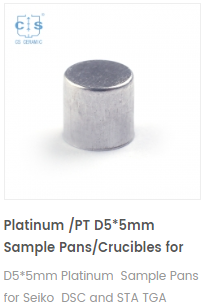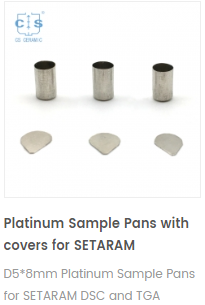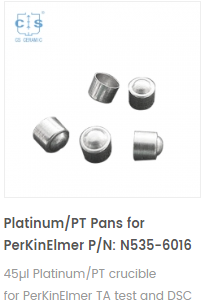Working with a platinum crucible can be intimidating - but it doesn't have to be. With the right preparation and knowledge, you can safely and efficiently use your platinum crucible for any of your needs. Follow this guide for step-by-step instructions on how to use a platinum crucible from start to finish.
Using a Platinum Crucible For Melting And Fusion
A platinum crucible is a container process equipment designed to withstand extremely high temperatures. It is commonly used in laboratories and industrial applications involving the melting and fusion of substances such as metals, glasses, and alloys. To ensure the safety of your crucible and obtain maximum results, always use protective wear when handling the material being melted, carefully monitor temperatures throughout the process, and be sure to allow any material inside the crucible to cool before removing it from your equipment.
A platinum crucible is typically used for a variety of purposes, from melting, alloying, and fusing materials in high-temperature applications. As a result, it is important to take into account the recommended temperature range when using a platinum crucible to ensure optimal results. Platinum can withstand temperatures ranging from 600°C (1120°F) up to 1600°C (2900°F).
To use a platinum crucible, you must first check for flatness. This is essential to ensure perfect thermal contact and avoid any artifacts. In order to use a platinum crucible effectively, there are certain criteria that need to be considered. Factors such as the type of material being melted and heated, how often the crucible will be used, and what temperature range it needs to withstand all need to be taken into account in order to choose the right crucible for the job.
Platinum crucibles are used for a variety of high-temperature purposes such as hydrofluoric acid and molten alkali metal carbonates because they are highly resistant to corrosion. They must be corrected after burning at high temperatures for a long period of time, as they can be slightly volatile at these temperatures. For instance, platinum of 100 cm2 area burnt at 1,200 °C for 1 hour will lose approximately 1 mg. However, platinum is nonvolatile below 900 °C.
In order to properly use a platinum crucible, it is essential to avoid contact with other metals at high temperatures. The crucible should be placed on a platinum tripod, burnt on a support of ceramic or quartz, or even on an electric furnace with asbestos sheets. A clamp may be used but should be covered with a platinum head; nickel or stainless steel clamps are only suitable for low temperatures as they could alloy otherwise.
Using a Platinum Crucible For Thermal Analysis Measurements
Using a platinum crucible for thermal analysis is an effective way to analyze a sample.
A platinum crucible is used in TGA or DSC analysis to contain metal or plastic samples during their thermal analysis. When using a platinum crucible, it is important to protect the crucible from damage with safety equipment such as heat-resistant gloves and safety goggles. Platinum crucibles should be heated slowly and evenly, either by an electric heating source or Bunsen flame. Once melted, samples can be slowly poured into molds using tongs. After use, the crucible should be allowed to cool before handling.
To use a platinum crucible, one should first determine the type of sample being tested, as this will provide information on how much heat the sample can withstand. Once the approximate temperature is known, a platinum crucible should be chosen that has appropriate dimensions, depending on the size of the sample. Lastly, before beginning the measurement, it is important to pre-heat the crucible and vacuum out any remaining gases or air from inside it.
A platinum crucible is a Type A crucible, used for producing pure non-interacting samples. In order to use a platinum crucible, select the correct size and then preheat it before placing your sample inside. To ensure maximum purity, rinse the crucible with distilled water or a solution of distilled water and mild acid before you put your sample in it. After you have heated the sample, turn off the heat source and allow the platinum crucible to cool before removing your sample.




 info@csceramic.com
info@csceramic.com










 +86 18273288522
+86 18273288522